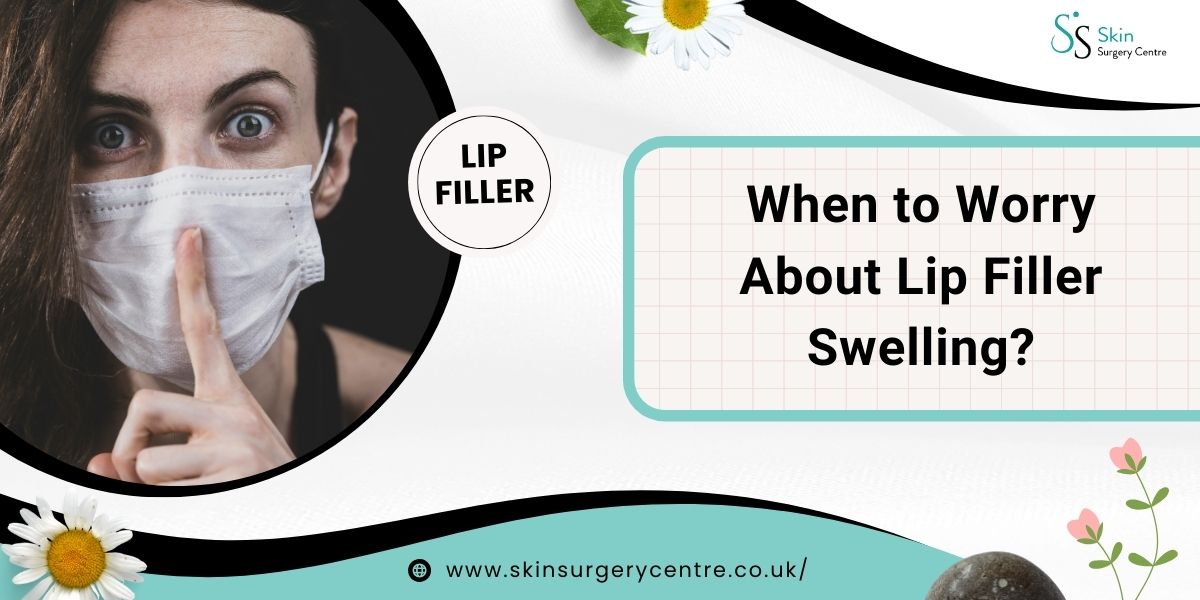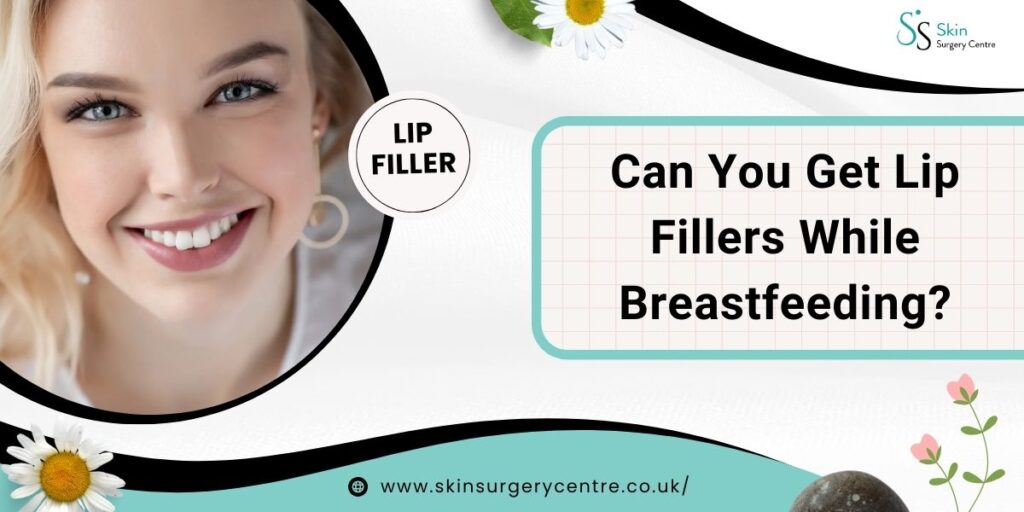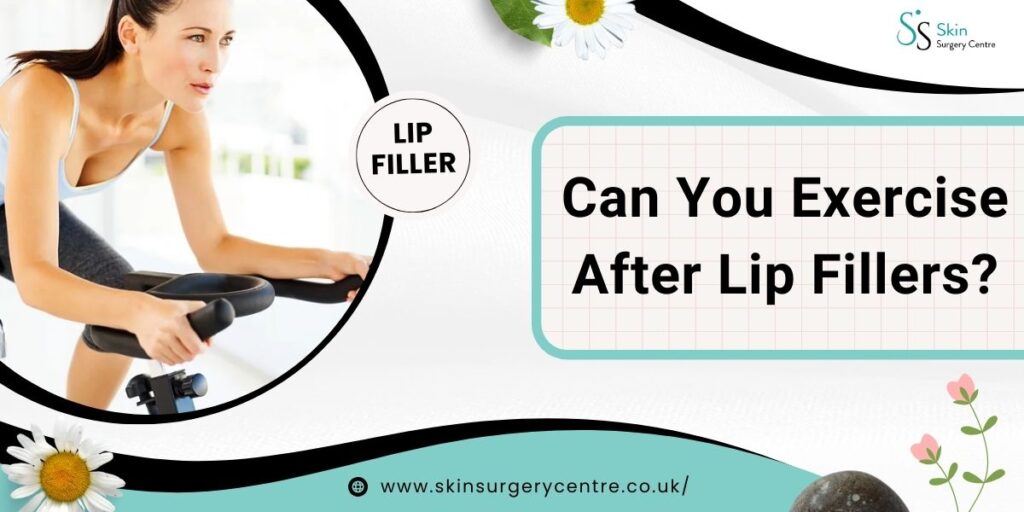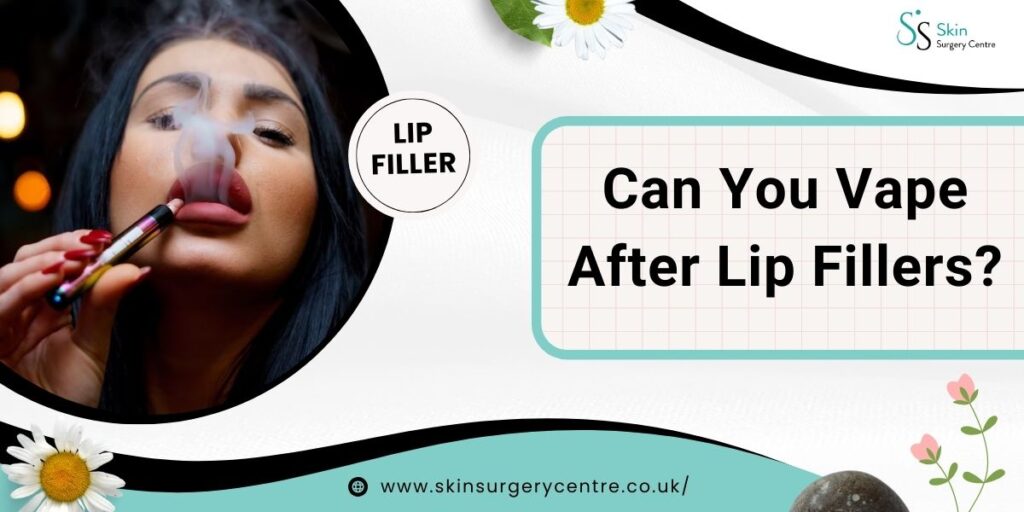Can You Get Lip Fillers While Breastfeeding? UK Expert Answers
Many new mums wonder: Can you get lip fillers while breastfeeding? It’s a common question in UK clinics, and this...

Are you thinking about getting lip fillers or simply curious about the recovery phase?
Lip fillers almost always cause some swelling — but how do you know when it’s a normal part of healing and when to worry about lip filler swelling becoming a sign of complication?
This blog aims to analyse the various stages of swelling that can stem from lip fillers – from the moment you undergo the procedure to the time when your lips are fully settled into your final look. We will also address potential worries and useful ways to help you manage swelling.
Did you know?
Also Read: What Are Lip Filler?
After a lip filler treatment, it’s completely normal to experience mild swelling and redness. According to the Aesthetic Surgery Journal (2021), over 90% of patients report swelling within the first 48 hours, a normal reaction after lip filler treatment. There are two main causes of swelling:
– The injections themselves, which cause slight trauma to the skin and tissue.
– The introduction of hyaluronic acid (the primary ingredient in most fillers) which attracts water and temporarily amplifies volume.
Additionally, you are more than likely to deal with mild tenderness and redness in the affected areas. These symptoms are common and tend to become absent within a day’s time. At this point, all you can do is proper aftercare and remind yourself that swelling is part of the healing process.
Swelling generally peaks between Day 2 and Day 4. A 2024 UK survey reported that 65% of patients experienced peak swelling on Day 2. Your lips may appear uneven or slightly firm as tissues respond to the filler — this is entirely normal. While this does feel and look quite unnatural, your body is responding with inflammation while trying to recover and heal through the process.
Which changes are happening internally? Your body is trying to deal with the filler as well as trying to heal the tissues around the filler’s injection points. It becomes essential to:
Refrain from massaging or touching of any form to the lips unless the person practising permits.
Drink an adequate amount of water and minimum salt food as this will help in dealing with water retention.
In case you have self-esteem issues, try not to worry, as this phase is short-lived. Swelling will begin to go down as you go through the week.
On day three or four, you should notice the swelling reducing from the previous days. A certain extent of swelling is ok, but the puffiness and asymmetries would be much more subtle than the previous days. A portion of your lip still trying to heal will always keep moving.
During the first week, most patients notice their lips have settled significantly. Any remaining swelling is generally slight, and at this point, lips begin to appear more natural. With most patients, this marks the first sight of the fuller, more sculpted look that was intended from the treatment.
Between days eight and fourteen, your lips will continue to heal and settle into their final shape. By this point:
– Almost all swelling is gone, or at least significantly decreased.
– Any bruising should be non-existent, or at least significantly faded.
– Your lips feel softer and have a more natural texture.
This point also marks the catch-up stage with your practitioner, should you have had one scheduled. At this stage, they will check how well you are healing and give you the opportunity to mention anything about your healing that you may be concerned about.
This is often the ideal time to make any changes, if you feel that a touch-up is required, or if you notice that there are some small changes that need to be made.
While swelling is a given in the healing process, in some rare cases it can be an indication of a problem. Here are some of the conditions to monitor:
This refers to visible swelling that is most noticeable between days two and four. This swelling then gradually decreases.
Some soreness or bruising may occur in the areas that injections were done.
If you are experiencing any of the below, reaching out to your practitioner sooner rather than later may be necessary:
Prolonged Swelling: Two weeks after treatment has ended and swelling is not improved or is worsening.
Severe Pain: Pain that exceeds what can be treated by over-the-counter medication.
Signs of Infection:
Lips appear warmer and redder than usual.
Increases in temperature.
Swollen injection sites filled with pus.
Chills.
Uneven Results or Hard Lumps:
Absence of symmetry that is significant and lacking improvement when the swelling subsides.
Lumps that are palpable and firm do not soften over time.
Most serious complications can be avoided with prompt attention. Always consult a GMC/NMC-registered practitioner — hyaluronic acid (HA) fillers are fully reversible with Hyaluronidase if needed. If you are uncertain on these matters, do not shy away from getting assistance.
You can enhance recovery and reduce swelling by adhering to these guiding aftercare tips:
Swelling and discomfort can be alleviated by periodic application of cloth-covered ice packs.
To encourage faster healing, makeup should be avoided in close proximity to the injection areas.
Fluid retention and blood flow can be increased by keeping the patient’s head elevated during sleep.
Activities that are likely to increase blood pressure or severe exercise should be avoided to minimise swelling.
Do not close off your recovery period skincare and opt for gentle, hydrating products; however, do not apply any exfoliating products near your lips.
Stay hydrated by drinking plenty of water as your body is in need of it; this will help you heal faster.
If these tips are followed, you will be able to make the recovery process easier and use your lip filler in no time.
After getting lip fillers, some swelling is to be expected; however, knowing what to expect can vastly improve your experience. From the very first minute after the procedure to a month down the line, knowing the healing process helps you take better care of your lips and nip any potential problems in the bud beforehand.
For all who have considerations and queries regarding lip fillers, aftercare, booking an appointment with a trained professional aide is highly encouraged. It is their job to make sure that you are informed and confident throughout the entire process.
Are you interested in keeping up to date with cosmetic procedures and beauty tips? The latest trends and advice crafted for you can be found in our blog!
Whether you’re seeking lip fillers in London, Manchester, Birmingham, or anywhere across the UK, book a consultation with a GMC-registered injector. Stay updated with our blog for expert aftercare tips and luxury aesthetic insights.
Mild swelling can persist up to 2 weeks as your tissues adjust. If swelling worsens, becomes painful, or you notice lumps, consult your GMC/NMC-registered practitioner.
Swelling typically peaks between Day 2 and Day 4, gradually decreasing by Day 7. Some tenderness or mild bruising is normal during this time.
Seek advice if swelling persists beyond 2 weeks, is accompanied by severe pain, redness, warmth, pus, or if you notice hard lumps that don’t soften.
Yes. HA fillers can be dissolved using Hyaluronidase by a trained, GMC/NMC-registered practitioner.
No. Swelling intensity varies based on filler type, injection technique, and individual healing response. 65% of UK patients report peak swelling on Day 2.
Avoid applying makeup directly on treated areas during the first 24 hours to reduce infection risk and allow healing.
Do not massage your lips unless instructed by your practitioner. Premature manipulation can worsen swelling or affect results.




Many new mums wonder: Can you get lip fillers while breastfeeding? It’s a common question in UK clinics, and this...
If you’ve had lip fillers or are planning them, you may wonder: Can I put lip balm on after lip...
Can you exercise after lip fillers? At our London, Manchester, and Birmingham clinics, this is one of the most common...
Can you vape after lip fillers? It’s one of the most common questions we hear at our London, Manchester, and...
As one of the most sought-after procedures in cosmetic enhancement, lip fillers help people restore volume and definition to their...